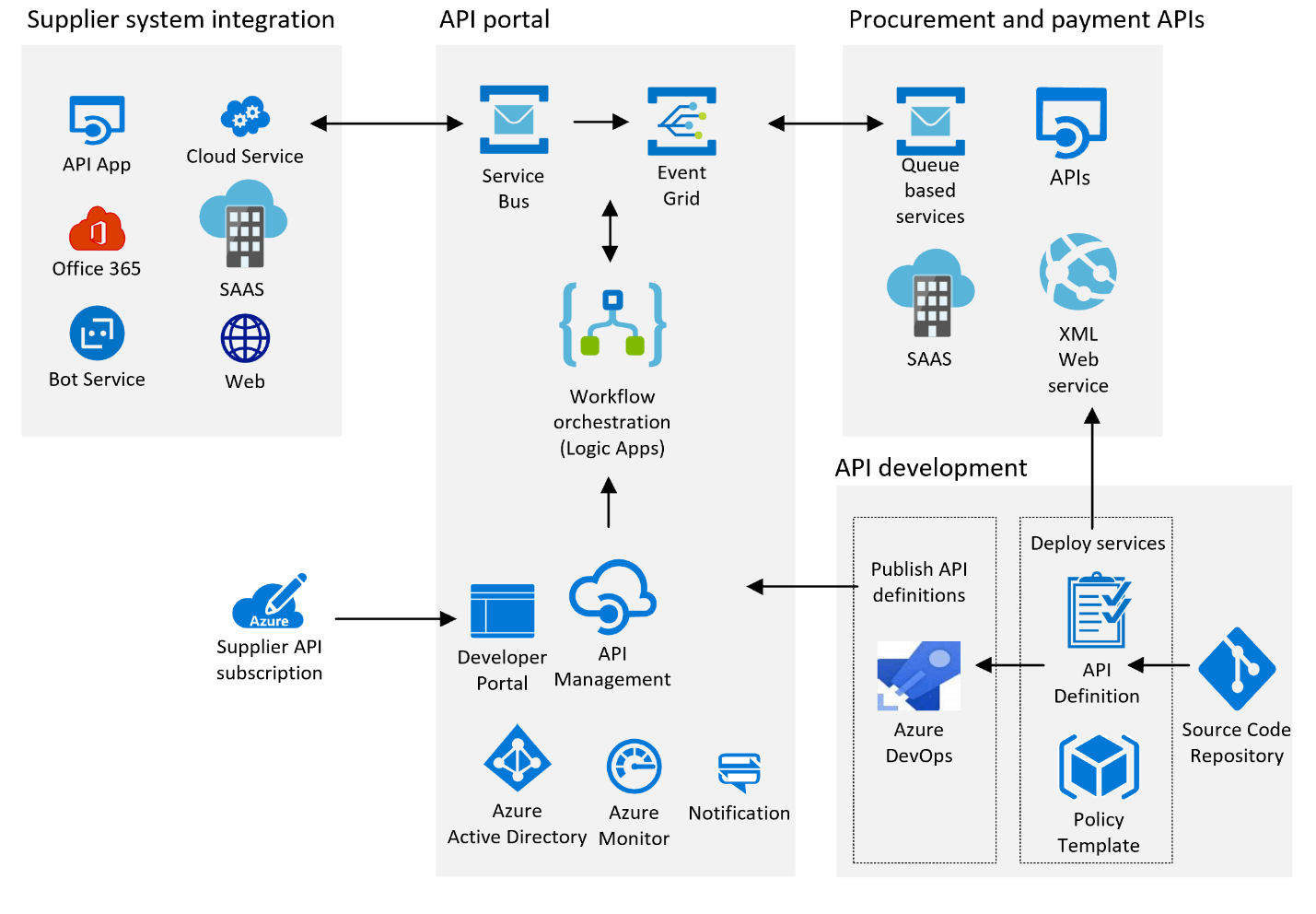This content has been archived, and while it was correct at time of publication, it may no longer be accurate or reflect the current situation at Microsoft.
 For decades, Microsoft operations teams have provided digitized information to external vendors and partners. They need access to all kinds of transactional details like invoice payments and shipping information—the sooner, the better.
For decades, Microsoft operations teams have provided digitized information to external vendors and partners. They need access to all kinds of transactional details like invoice payments and shipping information—the sooner, the better.
This data-sharing often required complex manual processes. There were ongoing security concerns and a lack of tools that supported application programming interface (API) publishing and monitoring. It was tedious, prone to errors, and affected the productivity of both suppliers and Microsoft.
That’s the challenge Wilson Gajarla, a senior software engineer for Supplier Experience in Microsoft Digital, has been wrestling with for the last 18 months.
“In the past, lack of discoverability was a barrier,” Gajarla says. “The few APIs available from Microsoft workflows were hard to find, especially from an external perspective.”
Just to understand the status of a transaction or get help if one appeared to be stuck, suppliers often had to contact Microsoft support teams. This process racked up more than 200,000 support tickets and operations requests every year.
Gajarla and his team in Microsoft Digital Finance decided a transformation was needed—these pivotal interactions between Microsoft and its thousands of vendors and partners worldwide were too important.
“We wanted to bring together all the different supplier systems,” he says. “Hardware, software, and services providers wanted one place they could discover the APIs and how to connect to the right internal systems and tools.”
[Find out how the Microsoft Accounts Payable Operations team used APIs to modernize invoice processing. Check out how Microsoft transformed cash flow data into an intelligent analytics platform. Learn about the “startup culture” that gave employees the freedom to experiment with digital transformation tools like APIs, microservices, and more.]
Creating a supplier portal with Microsoft Azure API Management
The transformation would need to be driven by better APIs.
After suppliers located an API or relevant data repository, they still had to extract the right information and keep it up to date. Vendors would download a dataset, feed it into their systems, and spend time reconciling it with any previous versions.
“Big suppliers like Dell and Zones had access to some of our workflow applications,” says Ashish Sayal, a principal software engineering manager on the Microsoft Digital Finance team. “These were designed primarily for employees and could be hard to use from a user experience perspective.”
The Microsoft Digital team was determined to find a way that suppliers could directly connect their enterprise resource planning systems with Microsoft APIs. About a year ago, Gajarla and his team launched the first version of a new, highly secure supplier API platform.
“We’ve built a one-stop shop for the APIs our suppliers want to access,” Gajarla says. “Now they can discover, experiment, and use any of the APIs published in the portal.”
To build the connections between the different systems for the API catalog for external suppliers, Microsoft Digital Finance used Microsoft Azure API Management (APIM), a growing Microsoft Azure web service that has already gained more than 6,000 active customers.
The new catalog exemplifies the growing API economy, a movement to standardize and expose data and functionality outside the primary application or system in which it’s processed and stored. This catalog enables Microsoft teams to monitor their APIs, enforce specific policies, and independently create versions of their datasets.
APIM also supports a publish/subscribe pattern, also known as pub/sub. Using event grid and workflow orchestration and logic apps, pub/sub decouples the supplier systems from live data for greater scalability and reliability.
“The supplier API portal enables internal business groups like human resources and finance to collaborate efficiently with vendors,” Gajarla says. “They can share their policy definitions and receive notifications about which subscribers have signed up for their data.”
Microsoft business groups can now publish and manage their APIs using the Microsoft Azure DevOps continuous integration and continuous deployment pipeline. This allows Microsoft Digital to quickly roll out new APIs to vendors and provide updates and fixes to different APIs at different times.

Making it easy for suppliers to access APIs
At last count, about 2 million batch transactions per quarter are now automatically processed in real time through Microsoft’s system-to-system integration. These workstreams range from reporting on recycling services to sending shipments, submitting invoices, and tracking payment status.
“Now there are many automated links between the suppliers and Microsoft,” Gajarla says. “A primary use case involves financial transactions like purchase orders, creating invoices, making the payments.”
The supplier API catalog adheres to Microsoft Digital’s API standards and guidelines, which detail the requirements and best practices that every API in the division is expected to follow.
A key principle of the Microsoft Digital standards is using Microsoft Azure Active Directory for single sign-on capabilities whenever possible. “Employees of vendors can use their work sign-in credentials to access all the APIs available on the platform,” Gajarla says.
Supplier employees can access the supplier portal as appropriate using their work account. They can try out new APIs and subscribe to updates without setting up an environment or writing code. This significantly improves the discoverability of APIs for Microsoft’s vendors and partners.
Sometimes, supplier developers need a head start on the code needed for integration. The supplier portal includes working solutions and examples in different coding languages like Curl, C#, Java, JavaScript, ObjC, PHP, Python, and Ruby. There’s also a wiki page, peer-to-peer forums, and extensive documentation to help suppliers find the APIs that meet their needs.
An optimized API economy benefits everyone
With the release of the API catalog for external suppliers, the supplier experience with Microsoft has rapidly improved. But the Microsoft Digital team isn’t stopping here. There are several enhancements on the way.
“We’re focused on continuing to reduce the effort required for Microsoft to coordinate and collaborate individually with each company,” Gajarla says.
The supplier portal’s discoverability is optimized for the developer experience, and integration will be improved over time. The new catalog has also increased healthy dialogue between suppliers and Microsoft.
“There’s a virtuous cycle at work between the supplier developer community and Microsoft,” Gajarla says. “Supplier feedback and contributions are helping resolve technical issues in a timely manner.” This reduces dependency on individual fixes and solutions.
Gajarla is looking forward to further productivity gains with the API economy.
“We aim to bring even more functionality and efficiency gains to all the vendors as well as Microsoft in the coming months and years,” he says.
Check out how Microsoft transformed cash flow data into an intelligent analytics platform.





